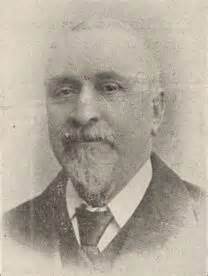Gwyrosydd
Noel Thomas Lecture : Gwyrosydd – “ puddler,
miner and genius”.
 |
| Daniel James "Gwyrosydd". |
He was born in LLangyfelach in 1848, and was
named as the third Daniel James in his family after his father and grandfather.
It was evident that his family were literate from the marriage certificate of
his parents which gave him a start in life. However, the lower Swansea Valley
at the time was a dangerous place to live and was described as a sulphurous
hell, being the eminent centre of copper smelting as well as other heavy and
polluting industry. Infant mortality was very high, and young Daniel was fortunate
to survive the cholera epidemic of 1849 which was brought on by the insanitary
domestic conditions of the time. There were two schools in Llangyfelach at the
time and it is probable that he attended J.H. Vivian’s Hafod Copperworks school.
Howver, he left at the age of thirteen and began work as labourer in a local
tinworks.
He married Ann Hopkins at the age of 23, and
soon found that he had a talent for writing which he used to his advantage
composing odes for his friends and getting paid for it. Now working as a 'puddler', in Morriston Ironworks,
the intense heat from the furnaces gave rise to a huge thirst which was usually
slaked with weak beer. It is this period which probably gave rise to the not
uncommon paradox of a literary genius with a dependency on alcohol which lasted
his whole life. He was a friend of the bard David Watkin Jones “Dafydd Morgannwg”, who taught him the strict metre of Welsh verse
and also persuaded him to adopt the Bardic name “Gwyrosydd”, for his writing.
This resulted in the publishing in his first book of verse “Caneuon Gwyrosydd”.
 |
| Bust of Gwyrosydd originally placed on Mynyddbach Community Centre |
 |
| Calon Lan Park, Blaengarw, opened in 2008. |
His life had been a hard one in terms of his
work and experiences, however, he was also famous throughout Wales as a writer.
O.M. Edwards, a towering figure in Welsh public life at the time described him as the country’s greatest bard. He is
commemorated by the names of two schools in Swansea, a Calon Lân park exists in Blaengarw
and former Archbishop of Canterbury Rowan Williams visited his bardic chair in
Swansea and also chose his famous song for “Desert Island Disks”.
Gwyrosydd died in 1920 and is buried with his first
wife in Mynyddbach Chapel cemetery. The chapel closed some years ago but has
been reopened as a community centre with the graveyard now cleared of
knotweed. He is also immortalised on the
terraces of sports grounds thoughout Wales and beyond. Mrs Rees finished her
lecture by commenting that the sentiments expressed in Calon Lân largely epitomised his character and philosophy on life.
“Nid wy’n gofyn bywyd
moethus,aur y byd na’i berlau mân.
Gofyn wyf am galon hapus,Calon onest calon lân.”
[I ask not for a luxurious life, the world’s
gold or fine pearls.
I ask
instead for a happy , clean and honest heart ]
Mr Gwyn Thomas thanked Mrs Rees for a very
thorough and enjoyable talk.

0 Comments:
Post a Comment
<< Home